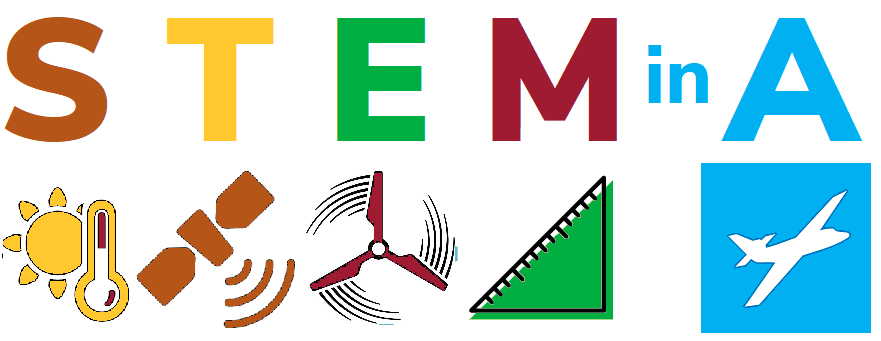Science, Technology, Engineering, Math and Adventure (STEM-A)

Aviation - STEM in action, Adventure in Flight
Science, technology, engineering, and maths (STEM) are the foundation of aviation. There are seven knowledge areas of study to support the flying skills required to obtain a pilots licence:
- Aerodynamics is the scientific study of the way objects move through air. The rules of aerodynamics explain how an aeroplane is able to fly.
- Aircraft General Knowledge / Systems is the engineering study of and aircraft's structure as well as the technology of radio and communication systems.
- Meteorology is the scientific study of the processes and phenomena of the atmosphere, especially as a means of forecasting the weather including the way air moves creating wind, clouds and rain.
- Navigation is the use of mathematics to plan and follow an optimum flight route taking into account terrain, wind and alternate destinations if required by weather.
- Flight Performance is the use of mathematics to calculate the take-off, landing and cruise performance of an aircraft under a range of aerodrome and meteorological conditions
- Human Factors is the scientific study of the issues affecting how people do their jobs. It includes social and personal skills, such as communication and decision making which complement technical skills as well as the impact of lifestyle and interaction with the operational environment These are important for safe and efficient aviation.
- Air Law is the study of the rules for the operation of an aircraft and aircraft systems as well as the carriage of passengers and cargo.
As you can see from the list above just some aspects of science, technology, engineering, and maths (STEM) together with adventure are embed in air activities. Can you think of more?
- Aerodynamics - anything that moves through air is affected by aerodynamics, from a rocket blasting off, to a kite flying. Since they are surrounded by air, even cars are affected by aerodynamics.
- Forces and Vectors There are four forces acting on an object in light - lift, weight, thrust and drag. These forces make an object move up and down, and faster or slower. The amount of each force compared to its opposing force determines how an object moves through the air.
- Navigation The science of knowing where you are so you can go to where you want to be.
- Geography Land (and sea) influence many aspects of flight from our ability to see landmarks to aid navigation, landform features that create rising currents of air or terrain that are barriers to travel.
- Meteorology For pilots, weather is not just what I an see out the window here and now but what it will be along my route and at my destination when I plan to arrive. With a headwind I will take longer and need more fuel, with a tailwind I will get their quicker, with a strong crosswind I might not be able to land at all, so where might I be able to go as an alternative.
- Electronics Modern aircraft have a lot of electronics such as radios and navigation devices including land and satellite-based aids. Do you know how a GPS works?
- Radio Communications In addition to having a radio a pilot needs to know how to communicate with Air Traffic Control and other pilots. Did you know that English is the official language of aviation and the all-time is based on Greenwich near London?
STEM Links
Meteorology Web Links
- Bureau of Meteorology - Aviation Weather Service
- BOM Weather Blog
- BOM 4 Day Forecast Colour Charts
- Bureau of Meteorology Training Centre
Scouts Canada
Cool Stuff from NASA
Engineering
Flight Simulation
- Redbird Virtual SETM+ Lab -


